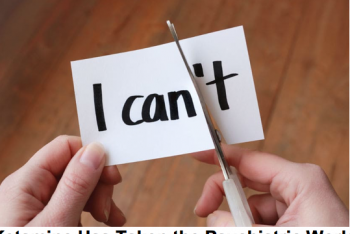WELLNESS--The night before my wedding, the symptoms started to creep in: A dull throbbing behind my eye turned into a piercing pain in my temple and slowly started to move to the other side of my head. I had worried for months that one of my frequent migraines would show up on the special day ― and that fear was slowly becoming a reality.
Fortunately I was able to ward off the symptoms for most of the day with medicine, but that night they returned worse than before. The next morning, I woke up with one of the most severe migraines I’d ever had, feeling like my head was being crushed on either side. It was accompanied by dizziness, nausea and vomiting. I was grateful that the migraine had stayed away for most of the ceremony and the reception, but I ultimately had to miss our wedding brunch the morning after and didn’t get to say goodbye to out-of-town guests.
Not only was I in tears because of the intense pain, but I was worried about what everyone thought. What if I was coming off as unappreciative or rude? What if everyone thought I was being dramatic for missing this because of inconvenient head pain?
“It’s difficult to understand what a migraine is truly like without having one,” Kevin Weber, an assistant professor of neurology in the headache division of the Ohio State University Wexner Medical Center, told me.
Migraines are debilitating; they’re not just little headaches. But people often misunderstand this and assume that a migraine isn’t a big deal. That couldn’t be further from the truth.
“It’s difficult to understand what a migraine is truly like without having one.”
- Kevin Weber, assistant professor of neurology in the headache division of the Ohio State University Wexner Medical Center
About 12 percent of the American population experiences migraines (18 percent of women and 6 percent of men), according to the Migraine Research Foundation. And more than 90 percent of sufferers aren’t able to function normally when they have an attack.
A “migraine is subject to the same prejudices that all pain patients experience. It is hard for people to understand why you are unable to fulfill your regular activities of daily living when they can’t see anything physically wrong with you,” said Meredith Barad, a clinical associate professor of anesthesia and neurology at Stanford Hospital and Clinics.
A migraine is usually longer and more severe than other headaches. It can last between four and 72 hours and may include sensitivity to light and sound; nausea; or vomiting, according to Barad. Neck pain, cognitive disruptions and sensitivity to smell may also occur.
The first time I had a migraine was in college, and I had no idea what I was experiencing. I was in so much pain that my mom came to visit me and drove me to the doctor. The doctor gave me pain medication, and I slept for two days straight until it went away. Though I had many headaches after that, I didn’t start having migraines again until a few years ago ― and they were more severe than the first one and became a frequent occurrence.
Weber said that migraines are most common in women during their childbearing years and in men from late childhood to their 50s. Both genetic and environmental factors can determine when someone starts getting migraines and how often they get them. For me personally, genetics play the biggest factor. My grandfather used to suffer from migraines, and a cousin who is my age started experiencing them around the same time as I did.
Migraines are also often prompted by lifestyle-related triggers. I’ve learned what my triggers are, from stress to alcohol to not enough sleep.
“Many patients have different triggers,” Weber said in an email. “The most common ones I hear are weather changes/barometric pressure change, dehydration, lack of food, lack of sleep, stress, smells (perfumes, car fumes, etc.), foods (red wine, MSG, processed foods, aged cheeses, caffeine or lack of caffeine), sounds and lights.”
After dealing with frequent migraines for a few years now, I’ve changed my daily habits and behavior. If I’m leaving somewhere early or canceling plans, it’s probably because I have a migraine. If I’m turning down a drink, it’s because I don’t want to trigger the debilitating pain. I’m always carrying around a water bottle and snacks in my purse. I sleep a LOT (usually 9-10 hours a night). I don’t wear perfume or use air fresheners in the house. If I seem particularly tired or out of it, it’s likely because my brain is foggy from a migraine or the medicine used to treat it. I don’t cry often, but when I do, it’s usually because I’m having a painful migraine.
My husband has seen me suffer through enough migraines that he can tell when I’m starting to get one. He’ll heat up an eye mask for me, turn off the lights, give me a head massage, and do whatever he can to help because he knows how paralyzing they can be. It’s these little things and the understanding from loved ones that has helped me get through them.
For people who suffer from migraines or for those who want to understand them more, Barad suggested looking at resources from the American Migraine Foundation and the National Headache Foundation.
And if you have a loved one who experiences migraines, “ask them what they’re going through and experiencing with an open mind,” Weber said. “It’s not ‘just a headache.’”
(Sarah Bourassa writes for HuffPost … where this report originated.)
-cw
























